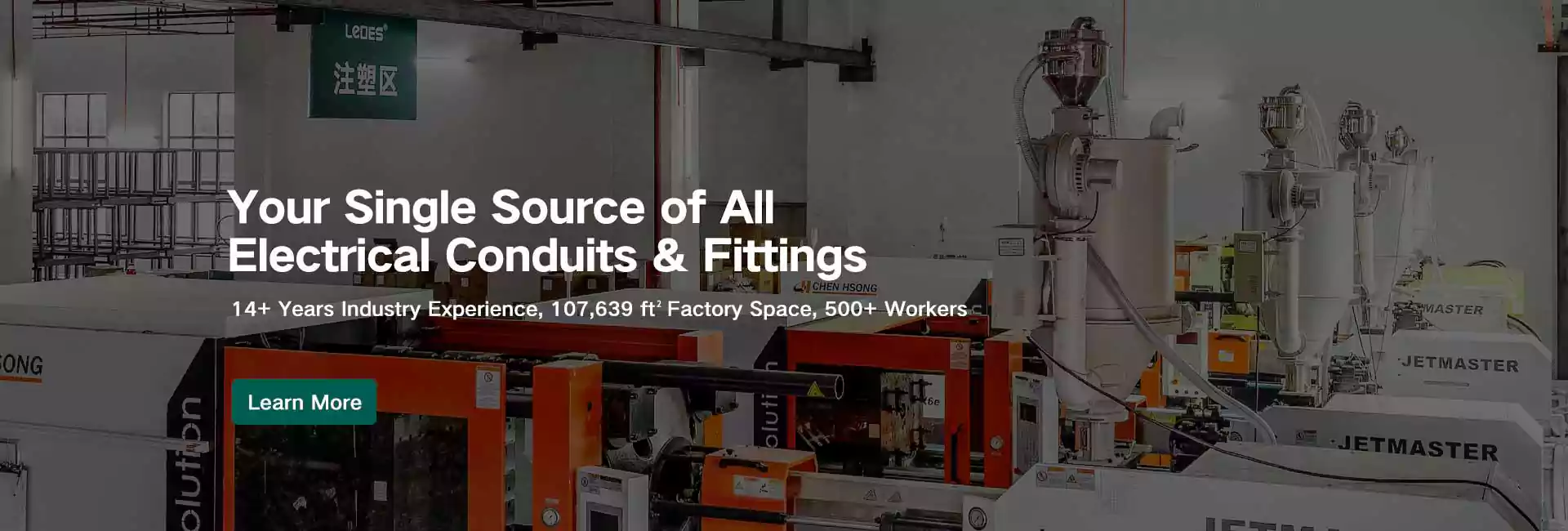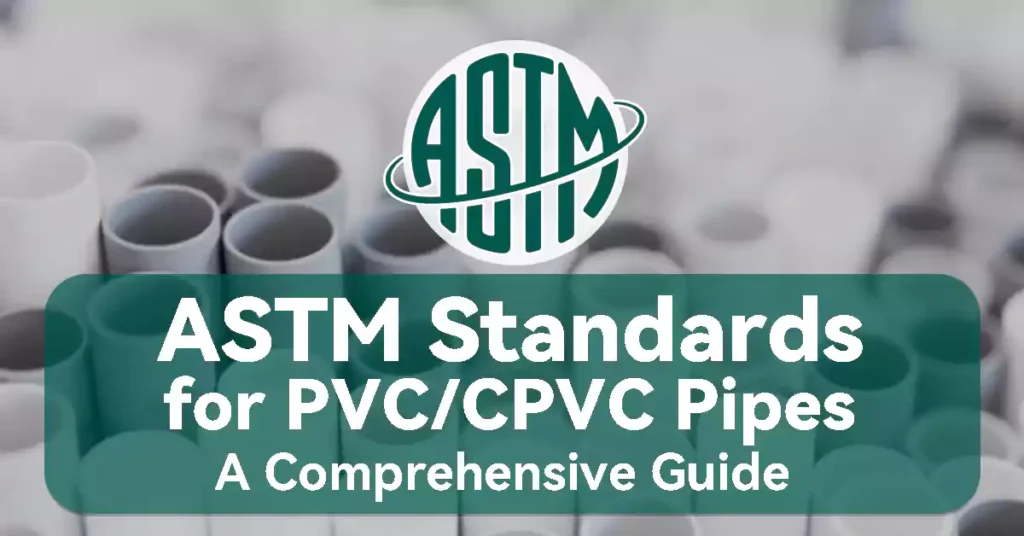
Tabla de contenido
Introducción
Polyvinyl Chloride (PVC) and Chlorinated Polyvinyl Chloride (CPVC) pipes and conduits are widely used in various industries due to their durability, chemical resistance, and cost-effectiveness. To ensure the quality and performance of these materials, the American Society for Testing and Materials (ASTM) has established a series of standards. These standards are crucial for manufacturers, engineers, and contractors to adhere to industry best practices and regulatory requirements.
In this comprehensive guide, we will explore the key ASTM standards applicable to PVC and CPVC pipes and conduits, their significance, and how they contribute to the safety and efficiency of piping systems.
Overview of ASTM and Its Role
The American Society for Testing and Materials (ASTM), now known as ASTM International, is a globally recognized organization that develops and publishes voluntary consensus standards. Founded in 1898, ASTM’s mission is to improve product quality, enhance safety, and facilitate trade through the standardization of materials, products, systems, and services.
For PVC and CPVC pipes, ASTM standards cover aspects such as material composition, physical properties, performance criteria, and testing methodologies. These standards help ensure consistency, reliability, and compatibility across different applications and environments.
Key ASTM Standards for PVC/CPVC Conduits & Pipes
Several ASTM standards apply specifically to PVC and CPVC pipes. Understanding these standards is essential for engineers, contractors, and quality control personnel to select the appropriate piping materials for their projects. Some of the most commonly referenced ASTM standards include
ASTM D1784 – 20: Standard Classification System and Basis for Specification for Rigid Poly(Vinyl Chloride) (PVC) Compounds and Chlorinated Poly(Vinyl Chloride) (CPVC) Compounds
ASTM D1784 – 11: Standard Specification for Rigid Poly(Vinyl Chloride) (PVC) Compounds and
Chlorinated Poly(Vinyl Chloride) (CPVC) Compounds
ASTM D2665: Standard Specification for Poly(Vinyl Chloride) (PVC) Plastic Drain, Waste, and Vent
Pipe and Fittings
ASTM E662 – 17a: Standard Test Method for Specific Optical Density of Smoke Generated by Solid
Materiales
ASTM F442/F442M-23: Standard Specification for Chlorinated Poly(Vinyl Chloride) (CPVC) Plastic Pipe (SDR–PR)
ASTM F512 – 12: Standard Specification for Smooth-Wall Poly(Vinyl Chloride) (PVC) Conduit and
Fittings for Underground Installation
ASTM D1785 – 21: Standard Specification for Poly(Vinyl Chloride) (PVC) Plastic Pipe, Schedules 40, 80, and 120
Each standard addresses specific aspects of pipe manufacturing and performance, ensuring compliance with safety and regulatory requirements. In the following sections, we will delve into the specific ASTM standards applicable to PVC and CPVC pipes, highlighting their scope and relevance.
ASTM D1784-20 & D1784-11 : Standard Classification & Specification for Rigid PVC and CPVC Compounds
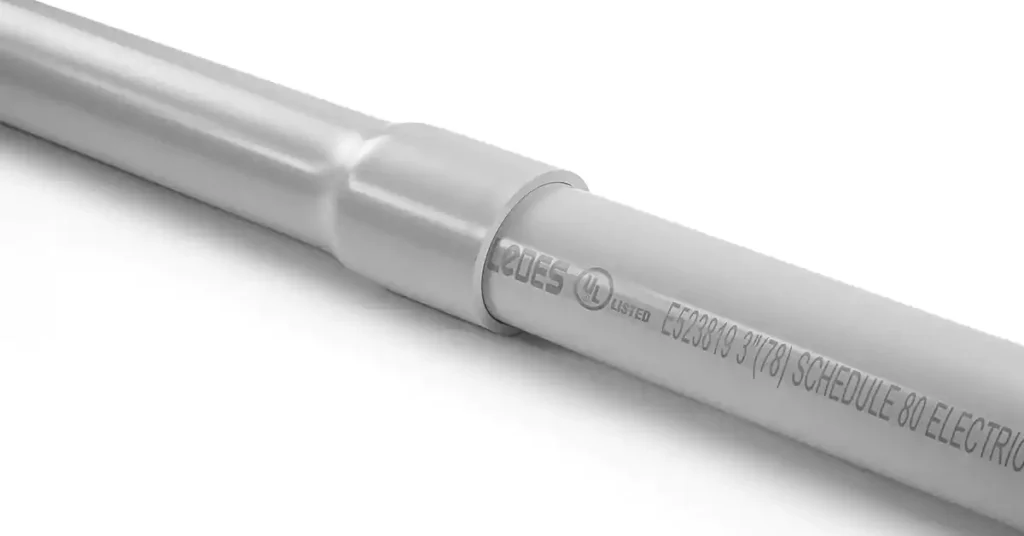
ASTM D1784 is the standard specification that covers the classification system and physical properties requirements for rigid PVC and CPVC compounds used in the production of pipes, conduits and fittings. It serves as the foundation for material selection, quality control, and performance evaluation in various applications.
Objetivo
The primary purpose of ASTM D1784 is to establish a uniform classification system for rigid PVC and CPVC compounds. This standard ensures that the materials used in manufacturing meet specific quality, strength, and durability requirements, enabling consistent performance across different applications.
Clasificación
ASTM D1784 classifies PVC and CPVC compounds based on their physical properties, including:
- Base resin
- Impact resistance (lzod)
- Tensile strength & Modulus of elasticity in tension
- Deflection temperature under load
- Inflamabilidad
These properties are defined in Table 1 of the standard, where each class of material is represented by a unique cell classification code, such as 12454. This code sequentially represents the resin type, impact strength, tensile strength, modulus of elasticity, and heat deflection temperature rating.
Material Composition
PVC and CPVC compounds under ASTM D1784 typically consist of:
Base resin: At least 80% vinyl chloride (PVC) or chlorinated vinyl chloride (CPVC)
Lubricants: To aid in processing and prevent surface defects
Stabilizers: To enhance thermal and UV resistance
Fillers: Sometimes added to improve mechanical properties or reduce costs
Mechanical and Physical Properties
ASTM D1784 specifies different material properties that must be met for a compound to qualify under the standard.
For PVC Compounds:
Impact Strength (Izod): ≥ 34.7 J/m (0.65 ft-lbf/in.) (ASTM D256)
Resistencia a la tracción: ≥ 48.3 MPa (7000 psi) (ASTM D638)
Modulus of Elasticity in Tension: ≥ 2758 MPa (400,000 psi)
Heat Deflection Temperature (HDT): ≥ 70°C (158°F) under a load of 1.82 MPa (ASTM D648)
For CPVC Compounds:
Impact Strength (Izod): ≥ 34.7 J/m (0.65 ft-lbf/in.) (ASTM D256)
Resistencia a la tracción: ≥ 48.3 MPa (7000 psi) (ASTM D638)
Modulus of Elasticity: ≥ 2758 MPa (400,000 psi) (ASTM D638)
Heat Deflection Temperature: ≥ 50°C (122°F) after annealing for 24 hours
Resistencia al fuego: Burning extent ≤ 25 mm, extinguishing within 10 seconds (ASTM D635)
Packaging and Identification
To ensure proper handling and traceability, ASTM D1784 specifies that PVC/CPVC materials should be commercially packaged with detailed labeling, including:
Material name and grade
Manufacturer’s name
Batch and lot number
Quantity
Shipping information
Contract or order reference
Proper packaging and labeling help in maintaining product integrity and ensuring compliance with industry standards.
Types of PVC/CPVC Pipe Products Under ASTM D1784
The compounds classified under ASTM D1784 are used in the manufacturing of various extruded and molded products, including:
Extruded pipes (for water supply, drainage, and industrial applications)
Injection-molded fittings (used for pressure and non-pressure piping systems)
Pressure-rated piping systems (requiring additional long-term stress considerations)
For high-temperature CPVC applications, Grade 10/11 is typically used due to its superior heat resistance and long-term performance in hot water or industrial chemical environments.
ASTM D1784 serves as the foundation for PVC and CPVC material classification, ensuring that products meet mechanical, thermal, and chemical performance requirements.
ASTM D2665: Standard for PVC Plastic Drain, Waste, and Vent Pipe and Fittings
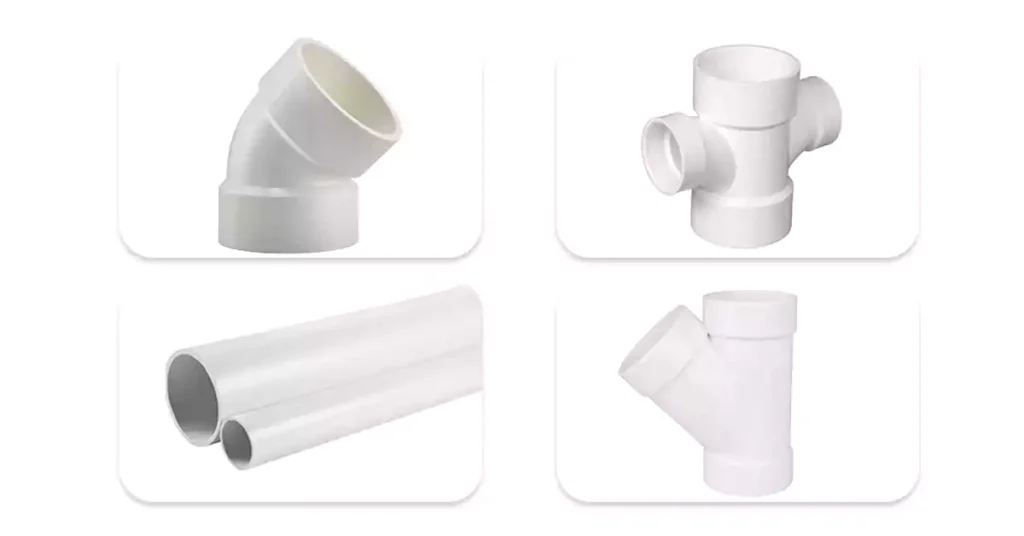
Definition and Purpose
ASTM D2665 is a widely recognized standard that specifies the requirements for Poly(Vinyl Chloride) (PVC) plastic drain, waste, and vent (DWV) pipes and fittings. This standard ensures that PVC DWV piping systems meet stringent material, dimensional, and mechanical property requirements to ensure long-term performance, safety, and durability in sanitary drainage applications.
PVC pipes and fittings manufactured under ASTM D2665 are primarily used for gravity-fed sanitary drainage, waste disposal, and venting applications in both residential and commercial plumbing systems. The standard provides essential guidelines for material composition, physical properties, impact resistance, and pipe stiffness to ensure high reliability in DWV systems.
Testing Methods and Requirements
Dimensions and Tolerances
Measurement Method: All dimensions, including outside diameter (OD), wall thickness, and length, must be determined following ASTM D2122.
Standard Lengths: Pipes are typically manufactured in lengths of 10 ft (3.05 m) and 20 ft (6.10 m), with an allowable tolerance of +1.0 in.
Outside Diameter and Wall Thickness: The OD and wall thickness must conform to the specifications detailed in Table 2 of ASTM D2665.
Guarniciones: Drain, waste, and vent fittings should comply with ASTM F1866 to ensure proper fit and function within the piping system.
Pipe Stiffness Requirements
Pipe stiffness (PS) is a key performance criterion for PVC DWV piping systems, ensuring resistance to deformation under load. The pipe stiffness is determined using ASTM D2412, which measures the pipe’s ability to withstand 5% deflection without structural failure.
Minimum stiffness values for different pipe diameters are provided in Table 3 of ASTM D2665, ensuring structural integrity in buried and above-ground applications.
Impact Strength
Testing Method: Impact resistance is determined using ASTM D2444, which involves a falling weight impact test (Tup C).
Criterios de aceptación: Typically, 9 out of 10 specimens must pass without showing signs of cracking or splitting.
Fittings Impact Strength: Individual fittings, especially at parting lines, must withstand a minimum force of 750 lbf/ft (11 kN/m) without any visible fractures, as specified in section 6.3.2 of ASTM D2665.
Types of Pipe Fittings
ASTM D2665 encompasses various fittings essential for DWV systems, including:
Standard Fittings: Elbows, tees, wyes, and couplings that conform to ASTM D3311, ensuring standardized dimensions and configurations.
Short-Length Pipes: Short sections of DWV pipes that comply with ASTM F2135, suitable for specific installation requirements.
Threaded Fittings: Components with threads that must meet the specifications of ASTM F1498 to ensure proper sealing and mechanical strength.
Compliance and Quality Assurance
To ensure consistent product quality, manufacturers must perform regular testing and adhere to the specified requirements. This includes calculating the Lower Confidence Limit (LCL) for pipe stiffness to ensure that 99% of all manufactured pipes meet or exceed the required stiffness values, providing additional quality assurance and reliability.
By adhering to ASTM D2665, manufacturers and plumbing professionals can ensure that PVC DWV piping systems are reliable, durable, and suitable for their intended applications, thereby safeguarding public health and infrastructure integrity.
ASTM E662-17: Standard Test Method for Optical Density of Smoke Generated
ASTM E662-17 is a standard test method designed to evaluate the smoke generation and optical density characteristics of solid materials under both pyrolytic (non-combustion) and flaming (combustion) conditions. The main objective is to quantify how much the material attenuates light by producing smoke, which is reported as a specific optical density (Ds).
Objetivo
The primary objective of ASTM E662-17 is to measure how much smoke a material generates under specified exposure conditions. This is crucial for evaluating materials in environments where smoke density can impact visibility and evacuation during a fire. However, it is important to note that:
- The test results provide specific optical density (Ds) values that are applicable only to the tested sample in its given form and thickness.
- The method does not account for toxicological effects of the smoke or its physiological impact on human vision.
- The test does not predict smoke behavior in real-world fire conditions, where factors such as ventilation, combustion dynamics, and multi-material interactions influence smoke production.
Test Methodology
The test is conducted inside a closed smoke density chamber where a material sample is exposed to a controlled heat source. Smoke accumulation is measured using a photometric system that tracks light attenuation over time, allowing for the calculation of the specific optical density (Ds). The test includes two conditions:
1. Non-Flaming (Thermal Decomposition) Condition
The sample is exposed to a 2.5 W/cm² radiant heat flux without direct flame application.
This condition simulates scenarios where materials generate smoke due to heat exposure without ignition.
2. Flaming Combustion Condition
The same 2.5 W/cm² heat flux is applied, but with the addition of a six-tube burner that introduces a direct flame to ignite the material.
This setup evaluates the smoke production when the material is actively burning.
The smoke generated under both conditions is analyzed through a photometric system that measures light transmission through the chamber. The reduction in light intensity is used to calculate the specific optical density.
Calculation of Specific Optical Density (Ds)
The specific optical density (Ds) is determined using the following formula:
Ds=G⋅{log(100/T)+F}
Where:
Ds = Specific optical density
G = Geometric factor (typically 132)
T = Percentage of light transmitted through the smoke
F = A correction factor accounting for the initial light transmission conditions
This equation expresses how much the smoke reduces visibility by measuring the logarithmic decrease in light transmission.
Data Interpretation and Limitations
- The results are expressed as specific optical density (Ds) values, indicating the concentration of smoke in the chamber.
- Samples must be uniform in composition, and their thickness should not exceed 1 inch (25.4 mm).
- If a sample exhibits self-ignition or any unexpected combustion behavior, additional testing is required to ensure data reliability.
- The values obtained are not inherent properties of the material and may vary under different fire conditions.
Significance in Material Selection
ASTM E662-17 plays a crucial role in assessing materials for applications where smoke production is a concern, such as:
- Building materials (e.g., wall panels, flooring, insulation).
- Electrical conduit and piping systems, where smoke density can affect fire safety compliance.
- Transportation sectors, including aircraft, railways, and automotive industries, where reduced visibility due to smoke can impact passenger safety.
By adhering to this standard, manufacturers, designers, and regulatory bodies can better evaluate and compare materials based on their smoke generation potential, leading to safer product development and improved fire safety standards.
ASTM F442/F442M-23: Standard Specification CPVC Plastic Pipe (SDR-PR)
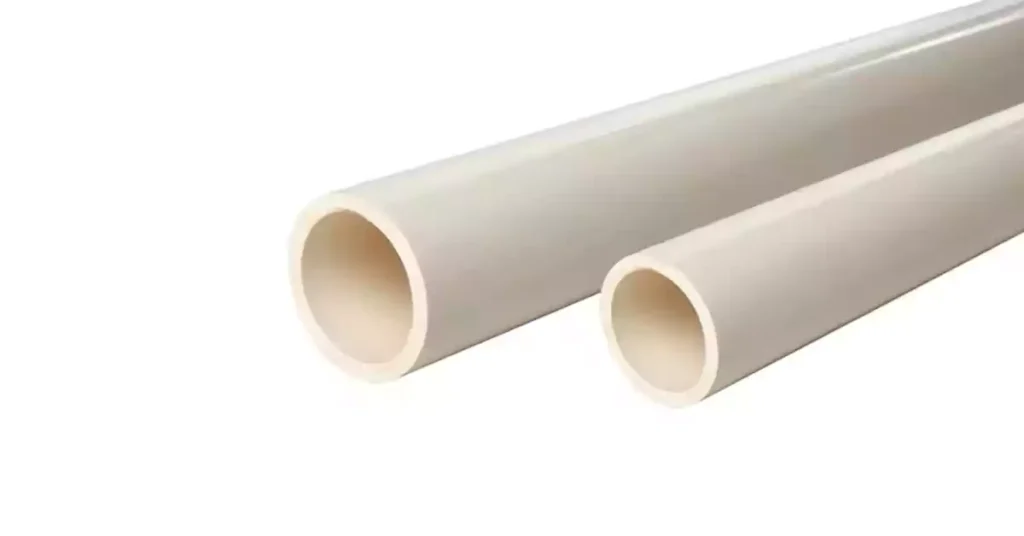
ASTM F442/F442M-23 is a standard specification that defines the requirements for Chlorinated Polyvinyl Chloride (CPVC) plastic pipes used in pressurized water distribution systems. This standard establishes material properties, dimensions, classification, and performance criteria to ensure the structural integrity and long-term reliability of CPVC piping under varying temperature and pressure conditions.
Objetivo
The primary objective of ASTM F442/F442M-23 is to specify the dimensions, material properties, and pressure ratings of CPVC pipes used for water distribution. It ensures that CPVC pipes are manufactured to meet consistent quality standards for hydrostatic strength, durability, and chemical resistance, making them suitable for both hot and cold water applications in residential, commercial, and industrial settings.
Clasificación
Pipes covered by ASTM F442/F442M-23 are manufactured from chlorinated poly(vinyl chloride) (CPVC) compound, formulated to provide enhanced temperature resistance, corrosion resistance, and chemical compatibility compared to conventional PVC pipes.
The standard classifies CPVC pipes based on two key rating systems:
- Standard Dimension Ratio (SDR-PR System): Pipes are categorized based on a fixed ratio of outside diameter to wall thickness (SDR) and a corresponding pressure rating (PR).
- Class System: Pipes are assigned a specific pressure class, indicating their ability to withstand internal pressure at a defined temperature.
Covers six Standard Dimension Ratios (SDR):
SDR: 11, 13.5, 17, 21, 26, and 32.5.
SDR, calculated as the ratio of outer diameter to minimum wall thickness (rounded to 0.5), directly correlates with pressure ratings, enabling uniform performance across all nominal pipe sizes. Lower SDR values (e.g., SDR11) indicate thicker walls for higher-pressure applications, while higher SDRs (e.g., SDR32.5) suit lower-pressure environments. Hydrostatic design stresses, derived from long-term testing, further classify pipes based on their pressure-bearing capabilities at 73°F (23°C) and 180°F (82°C).
Material Requirements
The CPVC compounds used in these pipes must comply with ASTM D1784, ensuring the material meets strict mechanical and physical properties. Additionally, the hydrostatic design basis (HDB) and hydrostatic design stress (HDS) values are determined according to ASTM D2837, with the following key properties:
HDB at 73 °F (23 °C): 4000 psi (28 MPa)
HDB at 180 °F (82 °C): 1000 psi (7.0 MPa) or 1250 psi (8.6 MPa)
Each CPVC pipe is designated with a material code that includes the ASTM type and grade, followed by the design stress values at 73°F (23°C) and 180°F (82°C), expressed in units of 100 psi (0.7 MPa). The complete material code consists of four letters and six numerical figures for proper identification and classification.
Material designation codes (e.g., CPVC 4120-05 or CPVC 4120-06) reflect design stresses at both temperatures.
Rework material must be clean and meet all specification requirements.
Rendimiento y pruebas
The standard mandates stringent testing to validate pipe quality:
- Dimensional Tolerances:
Outside Diameter (OD): Conforms to Table 1 (per ASTM D2122), with tolerances for out-of-roundness applicable pre-shipment.
Wall Thickness: Conforms to Table 2 (per ASTM D2122), with a maximum thickness variation of 12%.
- Pressure Testing:
Sustained Pressure Test: Six specimens withstand 1,000 hours at pressures. Failure of two specimens results in rejection.
Burst Pressure Test: Five specimens are pressurized to failure within 60–70 seconds, with minimum thresholds.
Accelerated Regression Test (Optional): An alternative to sustained/burst tests, this method uses regression analysis (per ASTM D2837) to project 100,000-hour hydrostatic strength.
Lower confidence limit (LCL) exceeds 15% of extrapolated LTHS.
Statistical parameters (M ≤ 0 or slope b ≥ 0) indicate unreliable projections.
Flattening Test: Three specimens compressed to 40% of their diameter must show no cracks or breaks.
Marking Requirements
Legible, permanent markings spaced ≤5 ft (1.5 m) include:
Nominal Pipe Size (e.g., NPS 2 or NPS 50).
Material code (e.g., CPVC4120-05).
SDR (e.g., SDR13.5).
Pressure ratings at 73°F and 180°F (e.g., “400 psi at 73°F, 100 psi at 180°F”).
ASTM designation (F442, F442M, or F442/F442M).
Manufacturer’s name/trademark and production code.
Potable water pipes: Evaluator laboratory’s seal/mark.
Requirements and Compliance
CPVC pipes must meet strict performance and quality criteria as outlined in ASTM F442/F442M-23. This includes compliance with:
- Minimum hydrostatic design stress requirements to ensure long-term pressure resistance.
- Wall thickness and dimensional tolerances for uniformity and reliability.
- Material purity and consistency to guarantee high performance in demanding applications.
Manufacturers producing CPVC pipes under this standard must conduct regular quality control checks to maintain compliance, ensuring that every batch meets the specified standards.
Aplicaciones
The standard explicitly excludes pipes for venting combustion gases. Its primary focus is water supply systems, where CPVC’s corrosion resistance, thermal stability, and cost-effectiveness make it ideal for residential, commercial, and industrial use.
ASTM F512-12: Standard for PVC Conduit & Fittings for Underground Installation
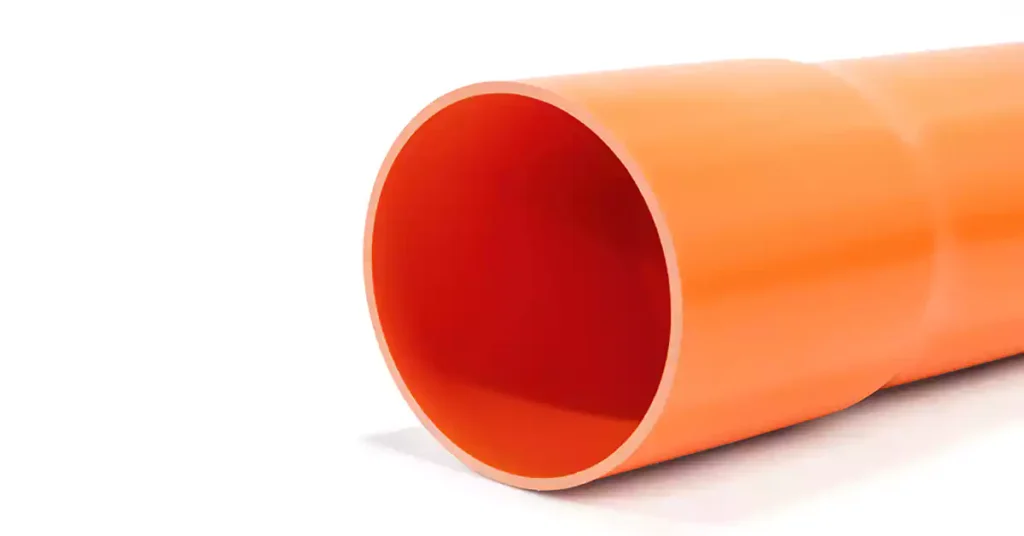
Definition and Purpose
ASTM F512-12 is a standard specification that defines the requirements for smooth-wall polyvinyl chloride (PVC) conduit and fittings designed for underground applications, primarily in electrical and communication systems. The standard categorizes conduits into two main types based on their intended installation method: Encased Burial (EB) conduit, which requires concrete encasement for structural support, and Direct Burial (DB) conduit, which can be buried directly in the ground without additional reinforcement. The primary purpose of this standard is to ensure uniformity in conduit performance, durability, and compatibility while providing protection for electrical and communication cables in underground environments.
Material and Classification
The conduits and fittings covered under ASTM F512-12 are manufactured from rigid polyvinyl chloride (PVC), complying with ASTM D1784 material specifications. The acceptable PVC cell classifications include 12254-A/B and 12164-B5, ensuring high durability, mechanical strength, and resistance to environmental stressors. Additionally, the specification allows for both single-wall conduit and coextruded honeycomb-core conduit designs, with conduit joints available in either integral bell or separate coupling configurations.
ASTM F512-12 classifies conduits into five types based on pipe stiffness and intended burial method:
EB-20 – Designed for encasement in concrete.
EB-35 – Designed for encasement in concrete with higher stiffness than EB-20.
DB-60 – Designed for direct burial without concrete encasement.
DB-100 – Designed for direct burial, offering greater stiffness than DB-60.
DB-120 – Designed for direct burial, providing the highest stiffness among DB conduits.
Additionally, the specification covers molded and fabricated fittings that are compatible with all conduit types listed above.
Dimensiones
The standard specifies conduit dimensions and tolerances, including wall thickness, socket depths, and length requirements. These dimensions are determined in accordance with ASTM D2122 test methods.
- Conduit lengths are typically supplied in 20 ft (6.1 m) or 25 ft (7.6 m) sections, unless otherwise agreed upon by the manufacturer and purchaser.
- Integral bells and socket dimensions follow two primary fitment systems:
- Interference Fit System, following ASTM D2466 specifications.
- Clearance Fit System, with tolerances defined within ASTM F512-12.

Main Tests and Test Methods
To ensure compliance with performance requirements, conduits and fittings undergo a series of standardized tests:
Acetone Immersion Test (ASTM D2152)
Validates fusion integrity by exposing specimens to acetone, ensuring no surface deterioration or laminations.
Pipe Stiffness Test (ASTM D2412)
Measures conduit stiffness at 5% deflection. The required minimum stiffness values are:
EB-20: ≥ 20 psi
EB-35: ≥ 35 psi
DB-60: ≥ 60 psi
DB-100: ≥ 100 psi
DB-120: ≥ 120 psi
Impact Resistance Test (ASTM D2444)
Evaluates the conduit’s ability to withstand mechanical impact using Type A or Type B impact hammers. Conduits must pass impact testing with a minimum acceptable pass rate (e.g., 17 out of 20 samples meeting requirements).
Requisitos: Assesses toughness at 0°C (32°F) using a Type A or B tup (hammer). For example, a batch passes if 17 out of 20 specimens withstand the specified impact energy without cracking.
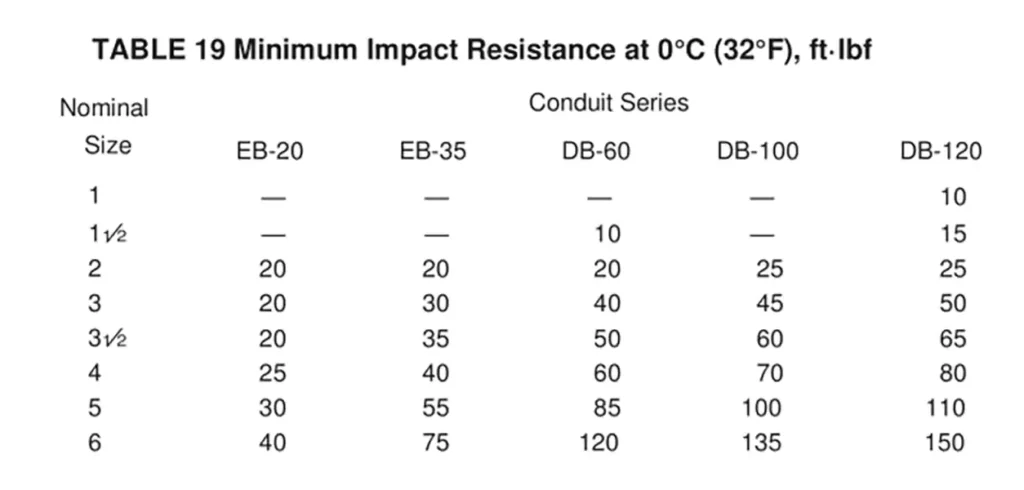
Requisitos
Conduits and fittings manufactured under ASTM F512-12 must meet the following quality and performance criteria:
Homogeneity: The material must be free of visible cracks, holes, foreign inclusions, or other defects that could compromise performance.
Uniformity: Conduits should be consistent in color, opacity, density, and mechanical properties to maintain product integrity.
Wall Thickness Compliance: The wall thickness of integral bells and sweeps must meet the minimum specifications to ensure structural reliability.
Product Marking
To ensure traceability and compliance, conduits and fittings must be clearly marked with essential information at intervals of 5 ft (1.5 m) or less. The markings include:
Manufacturer’s name or trademark
PVC cell classification (e.g., PVC 12254-A, PVC 12254-B, PVC 12164-B)
Tamaño y tipo de conducto (por ejemplo, DB-60, EB-35)
Espesor mínimo de pared
Número de control o código de lote
Designación ASTM (ASTM F512 para extrusión simple; ASTM F512 COEX para productos coextruidos)
Además, las curvas y los codos deben marcarse con su radio y ángulo de curvatura (p. ej., 18″ R – 30°), mientras que los accesorios deben etiquetarse con su tamaño, tipo de material (PVC) y la designación ASTM F512. Si las limitaciones de espacio impiden el marcado directo en los accesorios, la información requerida debe incluirse en el embalaje.
Aplicaciones y relevancia en la industria
La norma ASTM F512-12 es fundamental en infraestructuras subterráneas para redes eléctricas y de comunicaciones, ofreciendo soluciones que equilibran flexibilidad, robustez y resistencia a la corrosión. Su enfoque dual en aplicaciones revestidas de hormigón y de enterramiento directo garantiza su adaptabilidad a diversos entornos de instalación, desde corredores urbanos de servicios públicos hasta emplazamientos industriales. Al aplicar estrictos protocolos de materiales y pruebas, la norma mitiga el riesgo de fallos prematuros, garantizando que los conductos cumplan con las exigencias de los sistemas de infraestructura subterránea modernos.
ASTM D1785-21: Norma para tuberías de plástico de PVC, cédulas 40, 80 y 120
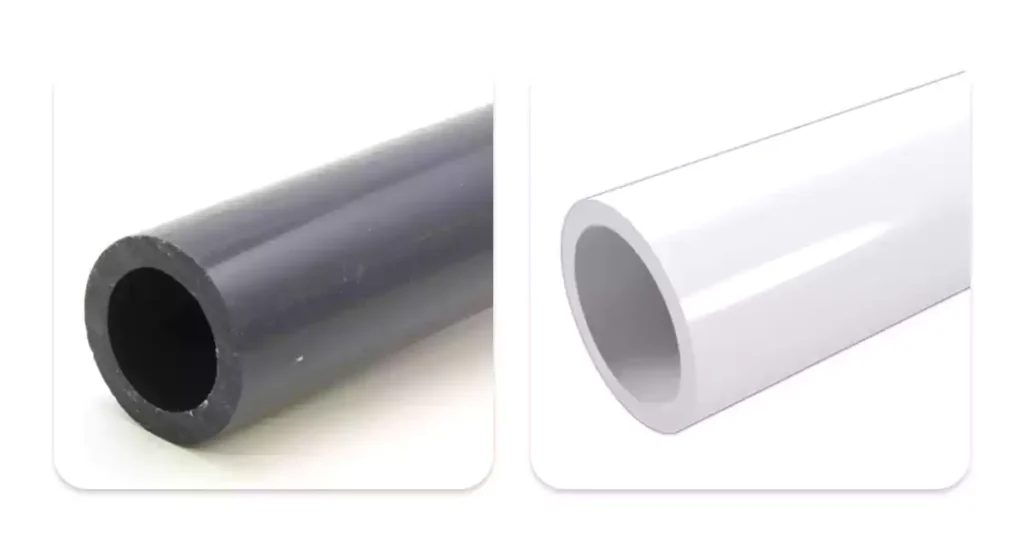
Definition and Purpose
La norma ASTM D1785-21 es una especificación estándar que define los requisitos para las tuberías de plástico de policloruro de vinilo (PVC) fabricadas con espesores de pared de cédula 40, 80 y 120. Esta especificación se aplica a tuberías con clasificación de presión, diseñadas principalmente para el transporte de fluidos, incluyendo agua potable, en diversas aplicaciones industriales y de plomería. La norma proporciona directrices sobre la composición del material, la clasificación, las tolerancias dimensionales, la clasificación de presión hidrostática y las pruebas de rendimiento para garantizar la calidad, la seguridad y la durabilidad de las tuberías de PVC utilizadas en sistemas de transporte de fluidos.
Esta especificación establece seis tipos/grados de tuberías de PVC, clasificados según la tensión de diseño hidrostático y las pruebas de rendimiento a largo plazo. Además, cumple con la norma ASTM D1784, que establece los requisitos de clasificación de materiales para los compuestos de PVC utilizados en la fabricación de estas tuberías.
Clasificación
La norma ASTM D1785-21 clasifica las tuberías de PVC según su tipo, grado y tensión de diseño hidrostático, garantizando un rendimiento uniforme en diferentes aplicaciones. Esta especificación abarca las tuberías fabricadas con espesores de pared de cédula 40, 80 y 120, y cada tubería está claramente marcada según una de las seis clasificaciones de tipo, grado y tensión designadas.
Anexo 40: Tubería de peso estándar para aplicaciones de presión moderada.
Anexo 80: Tubería de alta resistencia para sistemas de alta presión.
Anexo 120: Tubería extra pesada para entornos especializados de alto estrés.
Un aspecto clave de esta clasificación es la tensión de diseño hidrostático (HDS), que determina la capacidad de la tubería para soportar presiones a largo plazo. Estas tensiones se determinan mediante rigurosas pruebas a largo plazo, lo que garantiza que las tuberías puedan soportar presiones internas sostenidas sin fallas. El sistema de clasificación ayuda a seleccionar la tubería adecuada para diferentes aplicaciones de presión, especialmente en sistemas de distribución de agua e industriales.
Materiales
La norma ASTM D1785-21 especifica que las tuberías de PVC deben fabricarse con plásticos de policloruro de vinilo (PVC) con propiedades físicas y químicas bien definidas. Los materiales utilizados deben cumplir con las normas establecidas en la norma ASTM D1784, específicamente PVC 12454 o PVC 14333, lo que garantiza durabilidad, resistencia y resistencia química.
Para aplicaciones de agua potable, la tubería debe estar probada y certificada según la norma NSF/ANSI 14, lo que garantiza su seguridad para el consumo humano. Las tuberías que superen esta certificación deben llevar la marca de aprobación correspondiente.
Los fabricantes también pueden utilizar material de PVC retrabajado limpio, pero solo de su propio proceso de producción, y el producto final debe cumplir plenamente con los requisitos de la norma ASTM D1785-21. Esto garantiza una calidad y un rendimiento consistentes en todas las tuberías de PVC.
Dimensions and Tolerances
Los requisitos dimensionales y de tolerancia para las tuberías de PVC se especifican en las Tablas 1 y 2 de la norma. Estas dimensiones se verifican según la norma ASTM D2122, lo que garantiza el cumplimiento de estrictas tolerancias de fabricación. Los aspectos clave incluyen:
Diámetro exterior, espesor de pared y tolerancias – garantizar que las tuberías cumplan con las especificaciones de tamaño requeridas.
Tolerancias de falta de redondez – aplicable antes del envío para garantizar un ajuste adecuado durante la instalación.
Métodos de prueba y requisitos
Para garantizar la durabilidad y la seguridad, la norma ASTM D1785-21 exige varias pruebas críticas para las tuberías de PVC:
1. Prueba de presión sostenida (ASTM D1598)
Las tuberías deben soportar la presión hidrostática durante 1.000 horas en su nivel de tensión designado sin sufrir fallas (por ejemplo, roturas o fugas).
2. Prueba de presión de rotura (ASTM D1599)
Las tuberías deben soportar una prueba de presión hidrostática de corto plazo a cuatro veces la presión nominal durante 60 a 70 segundos sin fallar.
3. Prueba de aplanamiento
Las muestras de tubería (de un mínimo de 2 pulgadas de largo) se comprimen entre dos placas paralelas hasta que alcanzan 40% de su diámetro original o hasta que las paredes se tocan.
La muestra no debe agrietarse, partirse ni romperse bajo esta presión.
4. Condiciones de prueba
- Las pruebas se realizan en un entorno de laboratorio controlado a 73 °F ± 4 °F (23 °C ± 2 °C) con una humedad relativa de 50% ± 10%, a menos que se especifique lo contrario.
- Para las pruebas de impacto, las muestras se acondicionan a 32-35 °F (0-1,6 °C) durante al menos 30 minutos antes de la prueba.
Estos estrictos procedimientos de prueba garantizan que las tuberías de PVC cumplan con las expectativas de rendimiento para aplicaciones de alta presión.
Marking Requirements
Para garantizar la trazabilidad y el cumplimiento, la norma ASTM D1785-21 requiere que todas las tuberías estén claramente marcadas con la siguiente información a intervalos que no excedan los 5 pies (1,5 metros):
Tamaño nominal de la tubería (por ejemplo, 2 pulgadas (50 mm))
Código de designación del material de PVC (por ejemplo, PVC 1120)
Clasificación de presión y programa (por ejemplo, programa 40, 200 psi)
Designación y año ASTM (por ejemplo, ASTM D1785-21)
Manufacturer’s name or trademark
Código de producción (que identifica fecha, turno, planta y extrusora utilizada en la fabricación)
Marcado para uso de agua potable (si corresponde)
Los fabricantes deben asegurarse de que las marcas permanezcan legibles después de la instalación y la inspección.
Comparación con las normas ASTM
Las tuberías de PVC están reguladas por diversas normas ASTM, según su aplicación. La siguiente tabla resume las diferencias clave:
Tabla comparativa de 6 normas ASTM diferentes
Estándares | Contenido principal | Pruebas clave | Tipos de tuberías aplicables | Requisitos especiales |
ASTM D1784-20/11 | Clasificación de materiales de PVC y CPVC | Impacto Izod, resistencia a la tracción, deflexión térmica | Tuberías y accesorios extruidos y moldeados por inyección. | Las tuberías de presión requieren una evaluación HDB |
ASTM D1785-21 | Tuberías de presión de PVC para sistemas de agua a presión | Presión sostenida, presión de ruptura, prueba de aplanamiento | Tuberías Schedule 40, 80, 120 | Trazabilidad del código de producción; juntas de campana integradas. |
ASTM D2665 | Rendimiento de las tuberías DWV (desagüe, desechos y ventilación) | Rigidez de la tubería, prueba de impacto | Tuberías, codos y tes DWV | Las roscas deben cumplir con la norma ASTM F1498 |
ASTM F442/F442M-23 | Tubería de presión de CPVC | Prueba de aplanamiento, presión/ruptura sostenida | Tubos de la serie SDR | Prohíbe las pruebas neumáticas |
ASTM E662-17 | Prueba de densidad de humo | Atenuación óptica | Materiales sólidos | Espesor de la muestra ≤ 1 pulgada |
ASTM E512-12 | Conducto de PVC de pared lisa para instalación subterránea | Inmersión en acetona, Rigidez de la tubería, Impacto | Tipos de conductos EB/DB | El material debe cumplir con el grado 12254-A/B |
Conclusión
En resumen, las normas ASTM para tuberías de PVC y CPVC desempeñan un papel fundamental para garantizar la fiabilidad, la seguridad y el rendimiento de estos sistemas de tuberías en diversas aplicaciones. Desde la definición de las especificaciones y clasificaciones de los materiales hasta el establecimiento de rigurosos requisitos de prueba, estas normas garantizan que las tuberías de PVC y CPVC cumplan con los criterios de resistencia, durabilidad y resistencia química necesarios para su uso en sistemas de distribución de agua, conductos eléctricos y sistemas industriales.
Al adherirse a estas directrices establecidas, los fabricantes pueden producir tuberías que funcionan de forma constante bajo presión y estrés ambiental, a la vez que cumplen con importantes normativas de seguridad y salud, como las del agua potable. Los requisitos exhaustivos de materiales, procesos de fabricación y presiones nominales que se describen en estas normas proporcionan un marco claro para lograr tuberías de alta calidad.
En última instancia, comprender y seguir las normas ASTM es esencial para cualquier persona involucrada en el diseño, la fabricación y la instalación de sistemas de tuberías de PVC y CPVC, garantizando que los productos finales cumplan con los más altos estándares de rendimiento y seguridad.
Contacte con nuestro experto hoy Si aún tiene alguna pregunta sobre las normas ASTM o relacionadas, le responderemos dentro de las 24 horas.

